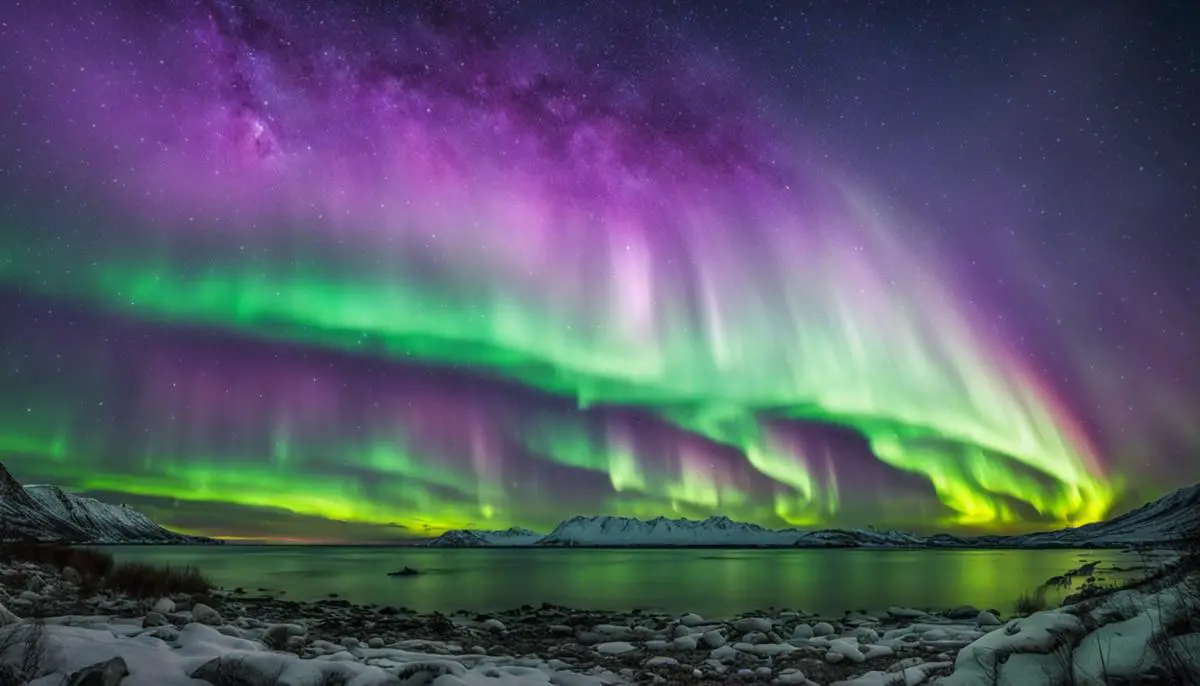The spectacle of the Aurora, commonly referred to as the Northern or Southern Lights, is a celestial performance of light and color that captivates hearts and minds of spectators worldwide. This magnetic marvel of nature is not just a mere twist of light in the night sky, but a bewitching phenomenon with layered scientific explanations interwoven with mythology and legend from different cultures.
In this exploration, we delve into the mystery of the Aurora, beginning with an understanding of its origin rooted in physics, followed by the significance of seasons and weather conditions on its visibility. We will further investigate the prime geographical hotspots from where this spectacular light display can be witnessed and provide a detailed guide about the optimal time of day for viewing along with some handy tips to maximize your Aurora expedition.
Understanding the Aurora Phenomenon
Understanding the Aurora Phenomenon
The Aurora phenomenon, also known as the Northern Lights (Aurora Borealis) in the northern hemisphere and the Southern Lights (Aurora Australis) in the southern hemisphere, is a natural light display in the Earth’s sky caused by the collision of solar particles with the Earth’s magnetic field. This collision excites atoms in the Earth’s atmosphere, causing them to light up and create stunning, ribbon-like light shows which color can range from green, yellow, red, pink to light blue, depending on the type of gas particles involved.
Prime Time to Witness the Aurora
The likelihood of seeing the Aurora, also known as the Northern Lights, is determined by a variety of factors including your geographical position, the local weather, and the time of year. Despite these variables, the consensus is that the best viewing opportunities come during the winter months, extending from late September through early April. This is primarily because the prolonged periods of darkness during this time offer a perfect canvas for the vibrantly colored lights. Optimal viewing conditions occur under clear, dark skies well away from any city lights and ideally after midnight. The lights tend to be most active around the equinoxes, in March and September. However, it’s important to keep in mind that the appearance of the Aurora is inherently unpredictable and heavily influenced by solar activity. Therefore, a degree of patience and persistence is often required when hoping to witness this natural spectacle.
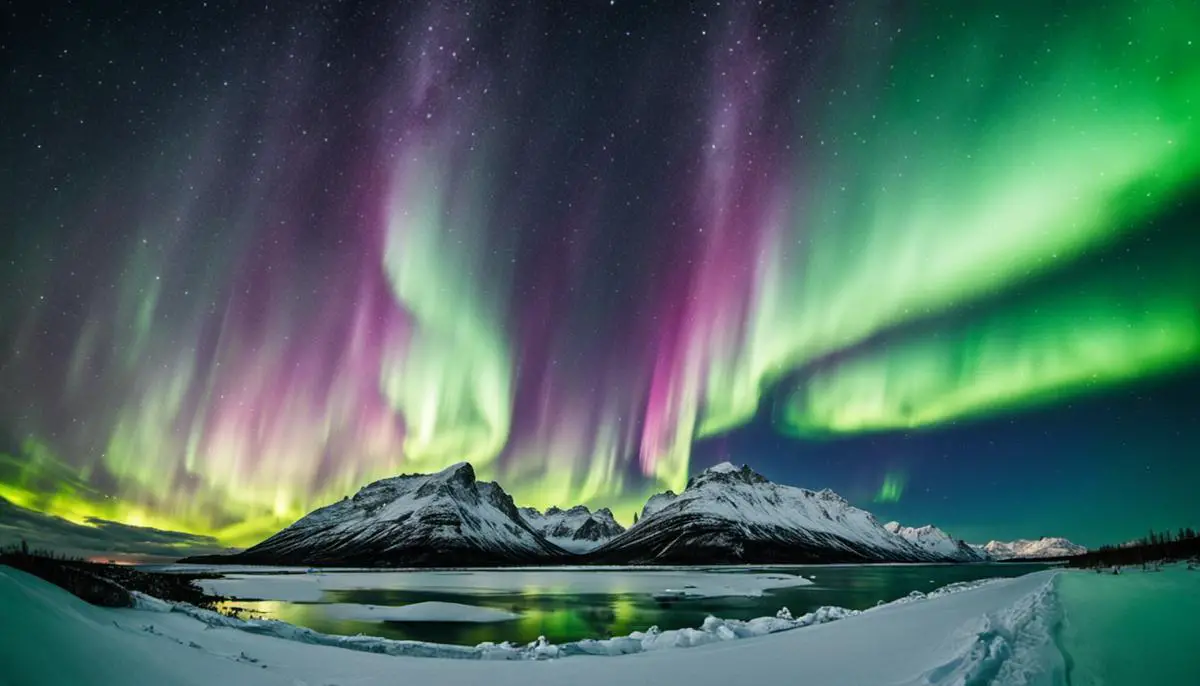
Optimal Seasons and Weather Conditions
Optimal Seasons to See the Aurora
The season of the year plays a significant role in determining the ideal conditions for Aurora viewing. This dazzling lights display, predominantly observed in the polar regions, can occur at any time of the year, but is most frequently visible during the autumn and winter months. The equinoxes in September and March typically offer increased opportunities for sightseers, as solar activity tends to amplify during these seasons, manifesting in more impressive Aurora shows. For observers located in the Northern Hemisphere, the peak viewing season generally stretches from late September to late March. During this time, the nights are the longest and the skies are at their darkest, providing the ideal backdrop for this mesmerizing celestial dance.
Weather Conditions and Solar Activity’s Impact
Weather plays a significant part in viewing the Aurora, with clear, dark skies providing the best conditions. Cloud cover can drastically reduce visibility, so monitor weather forecasts closely around your planned viewing times. Furthermore, the moon’s brightness can impact visibility; a new moon phase creates the best viewing conditions. Apart from the seasonal and weather considerations, solar activity is another vital factor that influences the visibility of the Aurora. Highly charged electrons from solar winds interact with elements in the Earth’s atmosphere, causing beautiful displays of light. The more solar activity, the more spectacular the displays. To predict these display times, consider monitoring websites or apps that track solar activity and issue Aurora alerts.
To enjoy the mesmerizing view of the Aurora, it’s crucial to find an environment free from light pollution. Both city lights and minor light sources can seriously impair your view of this natural spectacle. Therefore, to get the best viewing experience, it’s advisable to head to remote locations that are well away from urban areas and all forms of artificial lighting.
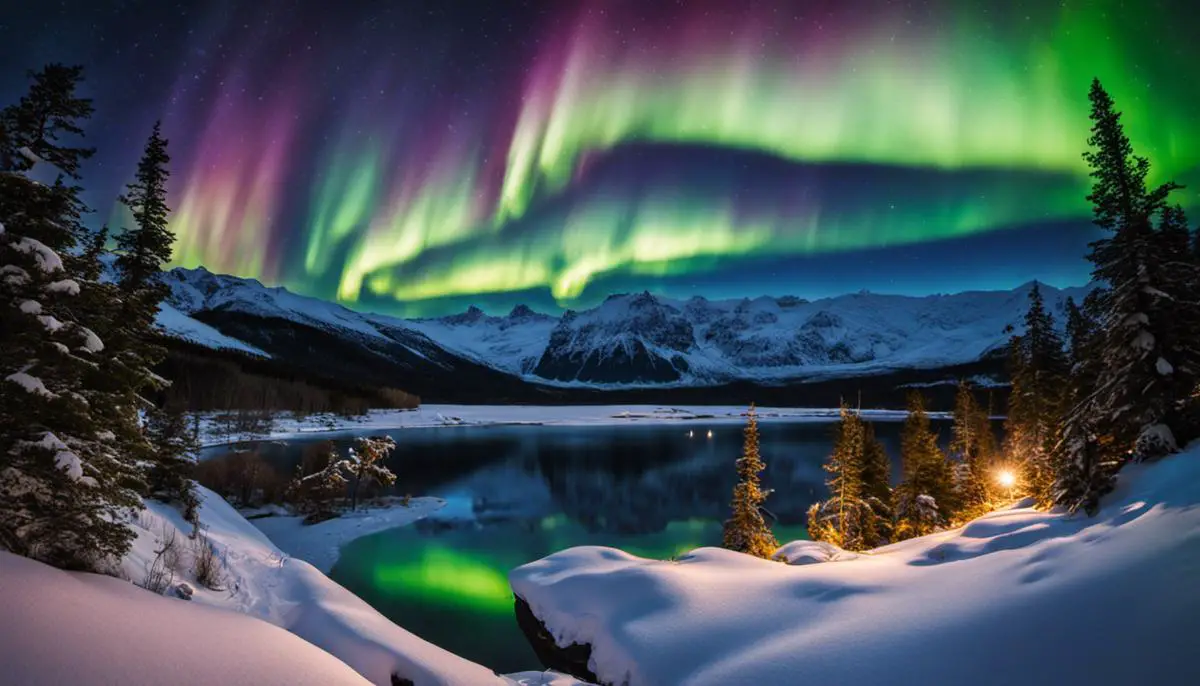
Best Geographical Locations
Best Locations for Viewing the Northern Lights
The Aurora Borealis, also known as the Northern Lights, is a breathtaking natural phenomenon best spotted from the high latitude regions in the Northern Hemisphere. Amongst these are Arctic Circle nations like Iceland, Norway, Sweden, and Finland. In North America, the US state of Alaska, and the Canadian regions like Yukon, Nunavut, and the Northwest Territories provide outstanding opportunities for viewing the Aurora Borealis. Notable spots within these areas include Tromsø in Norway, Kiruna in Sweden, and Finland’s Lapland region.
Where to See the Southern Lights
The Northern Lights may be popular, but their southern counterparts, known as the Southern Lights or Aurora Australis, are equally awe-inspiring. The best places to witness these magnificent displays are in the high-latitude regions of the Southern Hemisphere. Key destinations include Tasmania and Victoria in Australia, and Wellington and South Island in New Zealand. While parts of Antarctica also offer perfect viewing conditions, its remote location and harsh weather often dissuade visitors. Notable spots in Tasmania are Mount Wellington and Cradle Mountain, whereas Lake Tekapo and Stewart Island stand out in New Zealand. Do remember, the Aurora Australis can be trickier to predict and optimally require dark, clear skies. Both Auroras are usually best visible during winter months, when nights are longer and skies clearer.
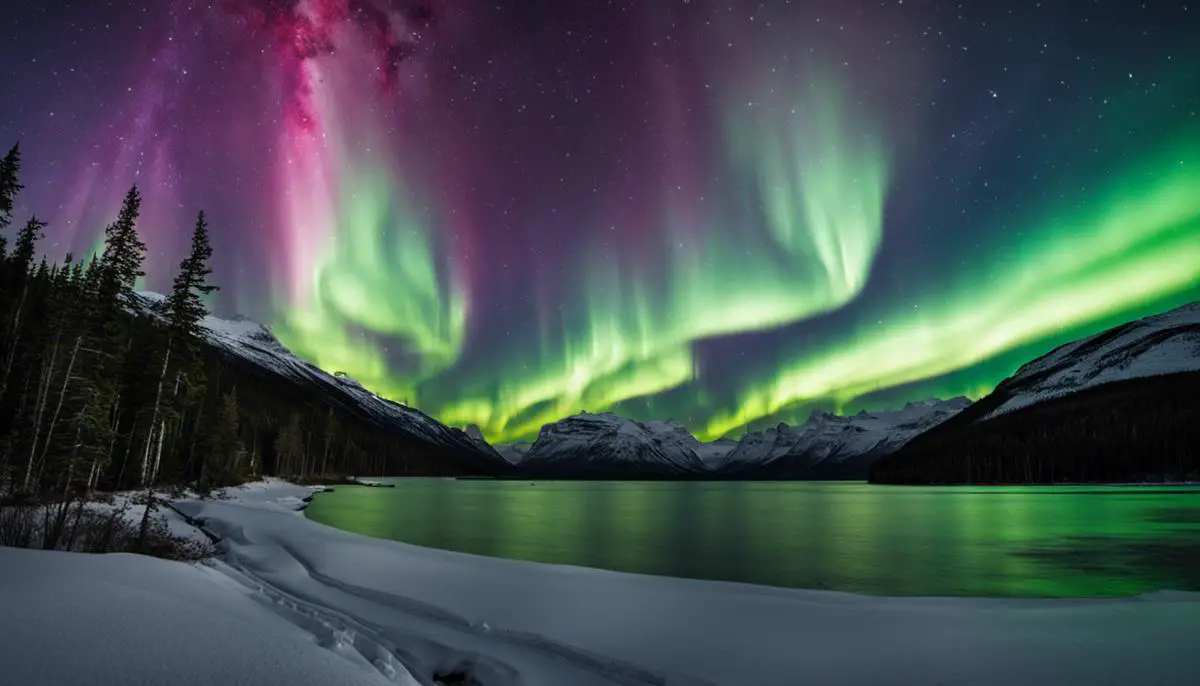
Time of Day and Planning Your Viewing
Optimal Time to See the Aurora
Along with the ideal location, the time you choose to view the Aurora also plays a crucial role in your experience. The prime time to observe this mesmerizing spectacle is from late evening to the early morning hours, more specifically, between 10 PM and 2 AM local time. You’ll want dark and clear skies, which are often accompanied by biting cold due to the absence of cloud cover. Therefore, it’s important to prepare and dress warmly when you head out during these hours.
Planning Your Viewing and Understanding the Lunar Cycle
While the time of day is significant, another important factor when planning your viewing is the lunar cycle. Full moons, while beautiful, can drown out the Aurora’s shine due to their brightness. Conversely, a new moon provides the darkest skies, increasing the chances of seeing a more vibrant and visible Aurora. Therefore, it’s beneficial to plan a viewing around the new moon phase. Furthermore, activity of the Aurora is known to increase around the equinoxes, in March and September, due to the Earth’s orientation to the sun. Hence, timing your viewing around these periods could increase your chances of catching a spectacular display.
Maximizing Your Aurora Viewing Experience
To further maximize your Aurora viewing experience, consider checking Aurora forecasts and geomagnetic activity indices. These provide information on both the expected visibility and intensity of the Aurora, aiding in planning your viewing. Various websites and apps offer live updates of this information. Additionally, try to position yourself in a location free from light pollution, like in rural or remote areas, as city lights can dramatically reduce the Aurora’s visibility. Remember to allow your eyes time to adjust to the darkness for at least 20 minutes to enhance your night vision and Aurora viewing experience.
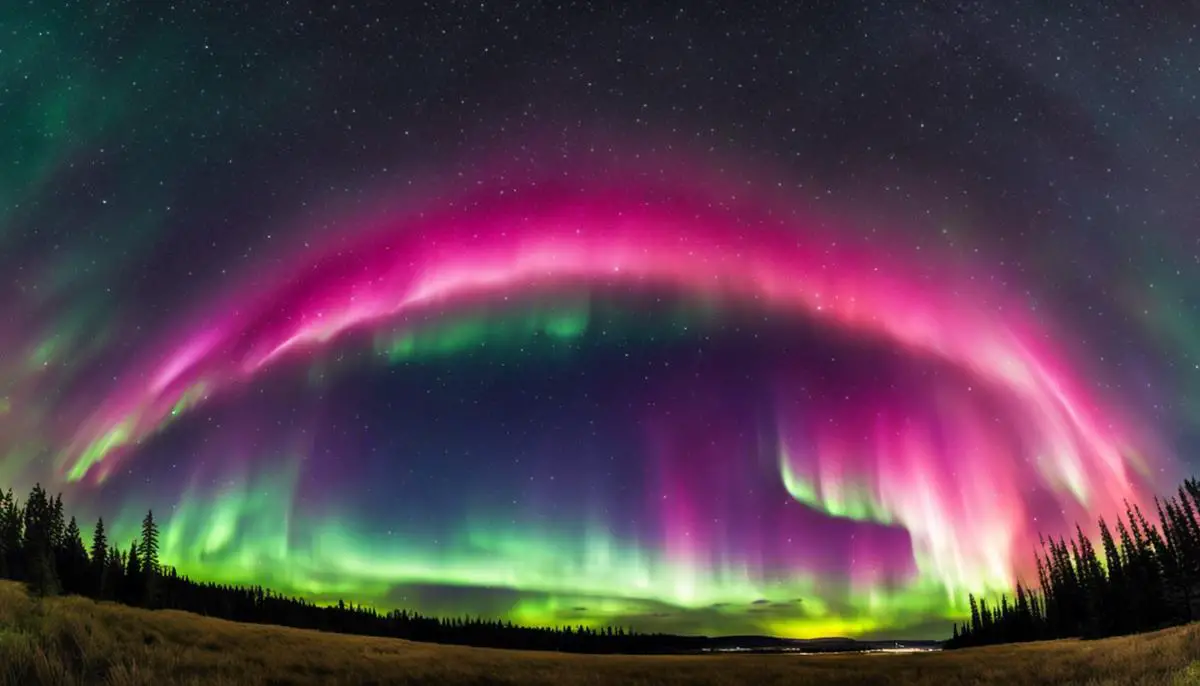
Having delved into the intriguing world of Aurora, it is evident that the spectacle is more than just a feast for the eyes. The intricate science behind the phenomenon, the impact of solar activity, and the influence of geographical location all play key roles in the viewing of this natural light extravaganza.
Whether you venture into the remote areas of the northern hemisphere or voyage to the southern extremes of our globe, each encounter with the Aurora is unique and moving. And if you time it right, considering weather conditions and lunar cycles, the experience can turn unimaginably majestic. Ultimately, the Aurora is not just an atmospheric event, but a celebration of our universe’s complex beauty, etching unforgettable memories in the hearts of those lucky enough to witness it.
![]()
